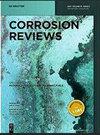钛合金腐蚀行为的研究进展
IF 3.2
4区 材料科学
Q3 ELECTROCHEMISTRY
引用次数: 5
摘要
摘要钛及其合金具有比强度高、耐腐蚀性好、耐高温等优点,在许多工业领域具有突出的应用前景。本文介绍了不同的局部腐蚀形式,包括电偶腐蚀、缝隙腐蚀、点蚀、氢致开裂、应力腐蚀开裂、微生物腐蚀、腐蚀疲劳和腐蚀磨损。其中,应力腐蚀裂纹和氢致开裂引起的腐蚀失效最为严重,约占实际失效事故的40–60%。讨论了温度、压力、腐蚀介质和微观组织对钛合金失效的影响。特别值得注意的是,F−对钛合金的钝化膜具有极强的侵蚀性。介绍了钛合金在航空航天、海洋、石油化工和生物医学环境中的腐蚀行为。在上述环境中,钝化膜在高温和缺氧环境中最容易被损坏并且难以被钝化。还提出了目前在腐蚀机理方面的争议,特别是对钛合金影响最严重的应力腐蚀,其机理将是未来研究的重点。本文章由计算机程序翻译,如有差异,请以英文原文为准。
Research progress on the corrosion behavior of titanium alloys
Abstract Titanium and its alloys show outstanding application prospects in many industrial fields due to their high specific strength, good corrosion resistance, high temperature resistance, etc. However, at present the corrosion failure of Ti alloys is attracted great attention with gradual increasing applications. The different localized corrosion forms are introduced in this review, including galvanic corrosion, crevice corrosion, pitting corrosion, hydrogen-induced cracking, stress corrosion crack, microbiological corrosion, corrosion fatigue, and corrosion wear. Among them, the corrosion failure caused by stress corrosion crack and hydrogen-induced cracking is the most serious, accounting for about 40–60% of the actual failure accidents. The effects of temperature, pressure, corrosive media and microstructure on the failure of titanium alloys are discussed. Particularly noteworthy, F− is extremely aggressive to the passive film of titanium alloys. The corrosion behavior of titanium alloys applied in aerospace, marine, petrochemical industries and biomedical environments are introduced. In the above environments, the passive film is most easily damaged and difficult to passive in high temperature and oxygen-deficient environments. The current controversies in the corrosion mechanism have also been proposed, especially the stress corrosion that has the most serious impact on titanium alloys, and its mechanism will be the focus of future research.
求助全文
通过发布文献求助,成功后即可免费获取论文全文。
去求助
来源期刊

Corrosion Reviews
工程技术-材料科学:膜
CiteScore
5.20
自引率
3.10%
发文量
44
审稿时长
4.5 months
期刊介绍:
Corrosion Reviews is an international bimonthly journal devoted to critical reviews and, to a lesser extent, outstanding original articles that are key to advancing the understanding and application of corrosion science and engineering in the service of society. Papers may be of a theoretical, experimental or practical nature, provided that they make a significant contribution to knowledge in the field.
 求助内容:
求助内容: 应助结果提醒方式:
应助结果提醒方式:


